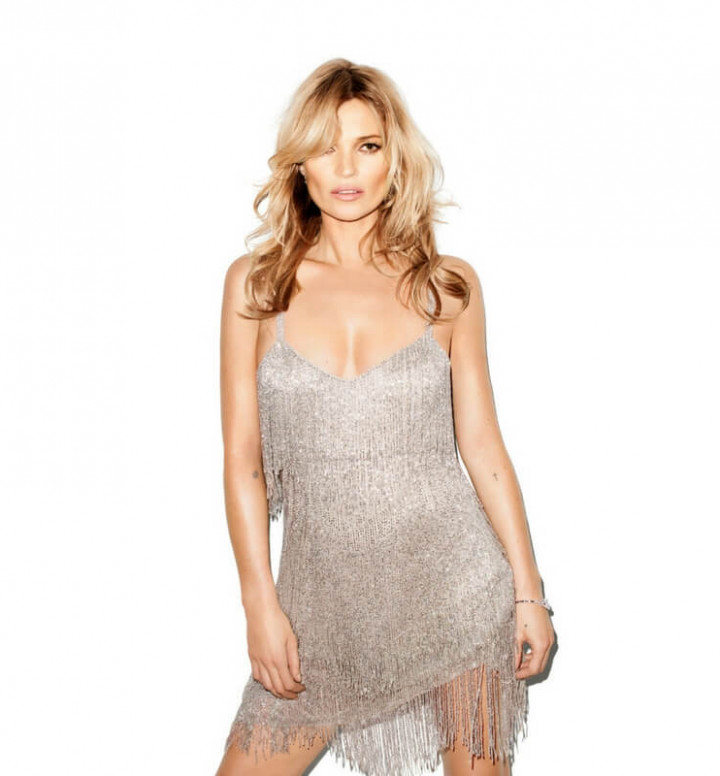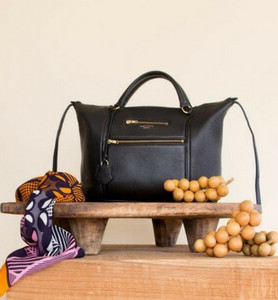NZFW day three is here—from international darlings to rising stars, here is everything you need to know about the collections walking down the runway
If you talk to anyone in the industry right now, they'll tell you that they're already pretty spent. Excited for what's to come, sure, and inspired by what's already taken place, absolutely. But there's very little time to take a pause—because there's a big day ahead. From international darlings to rising stars, here are our show notes—and everything important you need to know—for day three of New Zealand Fashion Week.
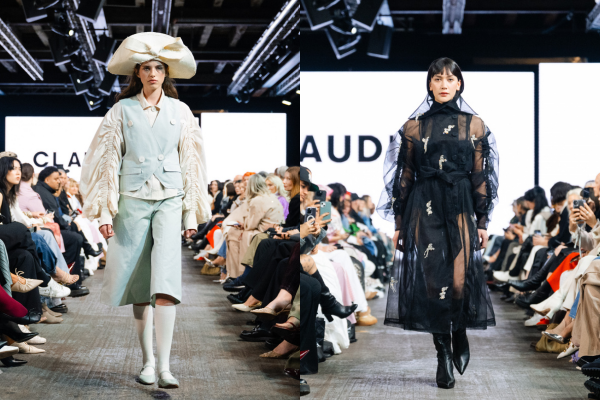
Images courtesy of Radlab.
Claudia Li
Claudia Li’s A Different Place and Time was less a debut than a reclamation. Though she’s shown for nearly a decade at New York Fashion Week, this was her first-ever runway in Aotearoa—and the homecoming landed with force.
Li reintroduced her signatures with greater volume and intent: shirting and corsetry twisted into fuller silhouettes, sheer mismatched gingham colliding with velvet, nylon, and ruching pulled tight like drawstrings. Bows—her signature enormous ones—appeared everywhere, from ribbon-laced looks to boxy bags, styled unexpectedly with Adidas and red Sir Peter Blake-style socks layered beneath. A feather stole nodded to the local fashion archive, while Victorian-inspired jackets and deconstructed suiting made the collection feel both historic and futuristic.
Red, Li’s anchor this season, arrived in flashes: a sequinned triangle, a slick of socks, then a show-stealing layered shift so molten it seemed to drip from the body. Androgynous wear leaned into lacing and cumberbunds belted over jackets, while culottes puffed into hydrangea shapes, sequinned and stretchy all at once—formed from a fabric we're all dying to know more about.
After three years away from the runway, Li returned with a collection that wasn’t tentative but triumphant. The message was clear: Claudia Li is making some of the most exciting clothes in New Zealand right now.
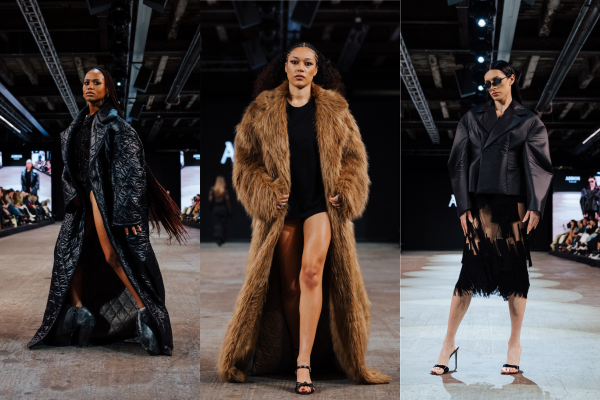
Images courtesy of Radlab.
Adrion Atelier
Adrion Atelier staged the kind of debut that made you grateful if you were lucky enough to be there to see it. South African–born, Whitianga-based designer Adrian Williams, who once headed design at Yu Mei and freelances for Entire Studios, opened his Opaque Boundaries runway at Shed 10 with a film shot at SO/ Hotel, where he is in residence for the week. The video bled into the live show seamlessly, setting a tone of intimacy, heritage, and quiet strength before models appeared in the flesh.
What followed was a study in contrasts: couture-level construction collapsing into the ease of streetwear; geometric tailoring cut against jersey drapery; long leather gloves paired with obscenely furry shoes and hulking, ugly-sexy boots. Careful detail was the throughline—quilted interiors, sheer beadwork, fringed layers—that rewarded anyone willing to look past the spectacle. Williams’ garments seemed to move with the body rather than against it, an intimacy that elevated the collection’s sharp edges.
There were standout moments: a robe-like quilted coat worn by Sisi Duncan, a peacock feather tube dress, emerald mob-wife coats, and sculptural gold looks that edged into Princess Leia territory. Just a year on from scooping emerging designer accolades, Williams presented like someone already designing in full stride.
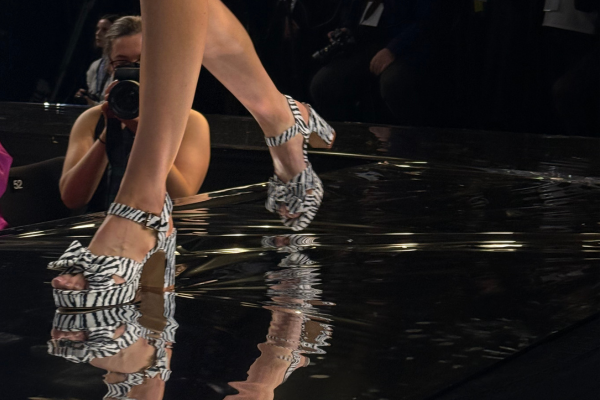
Kathryn Wilson
Kathryn Wilson’s show opened not with her signature strut but a dance sequence on film—a playful prelude to a collection that leaned into her signature optimism. Models, styled with preppy Lancôme makeup and springy wigs, walked in sheer gowns and swimwear that served mostly as a backdrop for the shoes.
This season, Wilson shifted between polished and tongue-in-cheek. There were slouchier leather bags that broke from her usual sleek constructions, woven mules that recalled a school-uniform practicality, and leopard-print platforms with the kind of presence that really needs no introduction. Polka-dot kitten heels, punctuated with oversized bows, channelled a retro flirtiness synonymous with the designer, while candy-coloured accents kept the whole lineup charged with a sense of play.
Accessories didn’t stop at the ankle: roomy duffle bags swung down the runway, hinting at weekend escapes and a life lived in transit. Wilson’s strength has always been the balance between wearability and whimsy, and here it was sharpened—shoes designed to be noticed, but also lived in. The result was bold and effervescent, yes, but also more layered than first glance: a reminder that Wilson is still pushing her own design codes forward—because not one, but two packed runway shows prove time and time again, that demand for her designs is ripe.
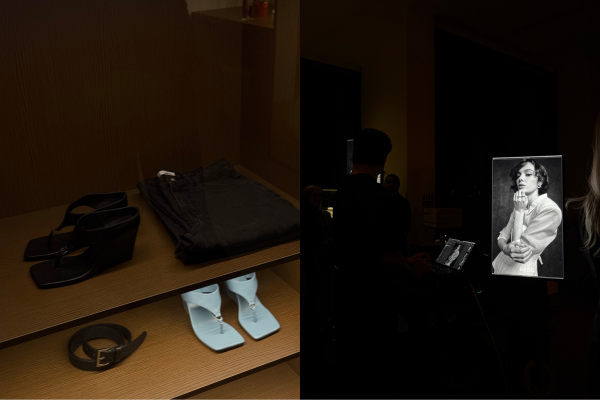
Rebe
Rebe has claimed the city's best penthouse for fashion week—forty-one floors up, Auckland stretched beneath the glass. She’s calling it The Apartment, but it reads more like a manifesto: fashion lived, not just shown. On opening night, friends and collaborators staged a live shoot around the rooms, muses slipping between kitchen and set as if the house were their own. Of course, Partridge diamonds appeared against collarbones and cuffs, reframing Rebe’s restrained tailoring with sudden flashes of excess.
That collection suggested a subtle shift in Rebe’s vocabulary. Known for her muted tones, streamlined silhouettes and collarless blazers, she leaned into a softened palette—baby blues, lighter ginghams—that nudged her signature sharpness into something more playful. Still, the pieces carried her familiar tension: structured but never stiff, polished but worn as if already lived-in.
What The Apartment captured most was not just clothes but context. This was a world you wanted to step into: the textures of Aleph and Tronque beauty, the diamonds refracted against the skyline, the hum of friends working alongside one another. It’s not fashion as spectacle, but fashion as a way of life.



